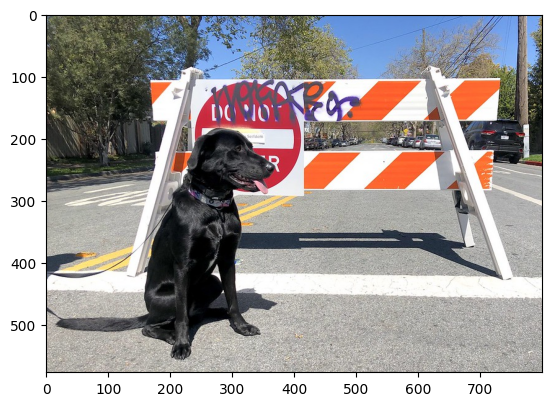Hello Image Classification#
This Jupyter notebook can be launched on-line, opening an interactive environment in a browser window. You can also make a local installation. Choose one of the following options:
This basic introduction to OpenVINO™ shows how to do inference with an image classification model.
A pre-trained MobileNetV3 model from Open Model Zoo is used in this tutorial. For more information about how OpenVINO IR models are created, refer to the TensorFlow to OpenVINO tutorial.
Table of contents:
Installation Instructions#
This is a self-contained example that relies solely on its own code.
We recommend running the notebook in a virtual environment. You only need a Jupyter server to start. For details, please refer to Installation Guide.
# Install required packages
%pip install -q "openvino>=2023.1.0" opencv-python tqdm "matplotlib>=3.4"
Note: you may need to restart the kernel to use updated packages.
Imports#
from pathlib import Path
import cv2
import matplotlib.pyplot as plt
import numpy as np
import openvino as ov
# Fetch `notebook_utils` module
import requests
if not Path("notebook_utils.py").exists():
r = requests.get(
url="https://raw.githubusercontent.com/openvinotoolkit/openvino_notebooks/latest/utils/notebook_utils.py",
)
open("notebook_utils.py", "w").write(r.text)
from notebook_utils import download_file, device_widget
# Read more about telemetry collection at https://github.com/openvinotoolkit/openvino_notebooks?tab=readme-ov-file#-telemetry
from notebook_utils import collect_telemetry
collect_telemetry("hello-world.ipynb")
Download the Model and data samples#
base_artifacts_dir = Path("./artifacts").expanduser()
model_name = "v3-small_224_1.0_float"
model_xml_name = f"{model_name}.xml"
model_bin_name = f"{model_name}.bin"
model_xml_path = base_artifacts_dir / model_xml_name
base_url = "https://storage.openvinotoolkit.org/repositories/openvino_notebooks/models/mobelinet-v3-tf/FP32/"
if not model_xml_path.exists():
download_file(base_url + model_xml_name, model_xml_name, base_artifacts_dir)
download_file(base_url + model_bin_name, model_bin_name, base_artifacts_dir)
else:
print(f"{model_name} already downloaded to {base_artifacts_dir}")
v3-small_224_1.0_float.xml: 0%| | 0.00/294k [00:00<?, ?B/s]
v3-small_224_1.0_float.bin: 0%| | 0.00/4.84M [00:00<?, ?B/s]
Select inference device#
select device from dropdown list for running inference using OpenVINO
device = device_widget()
device
Dropdown(description='Device:', index=1, options=('CPU', 'AUTO'), value='AUTO')
Load the Model#
core = ov.Core()
model = core.read_model(model=model_xml_path)
compiled_model = core.compile_model(model=model, device_name=device.value)
output_layer = compiled_model.output(0)
Load an Image#
# Download the image from the openvino_notebooks storage
image_filename = Path("data/coco.jpg")
if not image_filename.exists():
download_file(
"https://storage.openvinotoolkit.org/repositories/openvino_notebooks/data/data/image/coco.jpg",
directory="data",
)
# The MobileNet model expects images in RGB format.
image = cv2.cvtColor(cv2.imread(filename=str(image_filename)), code=cv2.COLOR_BGR2RGB)
# Resize to MobileNet image shape.
input_image = cv2.resize(src=image, dsize=(224, 224))
# Reshape to model input shape.
input_image = np.expand_dims(input_image, 0)
plt.imshow(image);
coco.jpg: 0%| | 0.00/202k [00:00<?, ?B/s]

Do Inference#
result_infer = compiled_model([input_image])[output_layer]
result_index = np.argmax(result_infer)
imagenet_filename = Path("data/imagenet_2012.txt")
if not imagenet_filename.exists():
download_file(
"https://storage.openvinotoolkit.org/repositories/openvino_notebooks/data/data/datasets/imagenet/imagenet_2012.txt",
directory="data",
)
imagenet_classes = imagenet_filename.read_text().splitlines()
imagenet_2012.txt: 0%| | 0.00/30.9k [00:00<?, ?B/s]
# The model description states that for this model, class 0 is a background.
# Therefore, a background must be added at the beginning of imagenet_classes.
imagenet_classes = ["background"] + imagenet_classes
imagenet_classes[result_index]
'n02099267 flat-coated retriever'